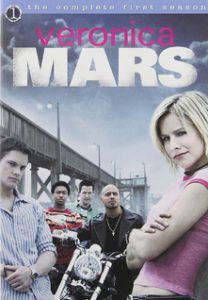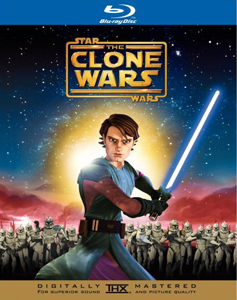Disney’s “Rogue One: A Star Wars Story” is getting a lot of buzz, an odd contrast to the last time a “Star Wars” film outside of the numbered episodes premiered. In August 2008, I mentioned “The Clone Wars” movie to friends, and they responded with “There’s a new ‘Star Wars’ movie out?” Although it was a wide-release film, there wasn’t much of a marketing push behind it, because George Lucas decided fairly late in the game to release the first four-episode arc of the new TV series as a “movie.”
Among the nine U.S. theatrical “Star Wars” films, “The Clone Wars” ranks a distant ninth at $35 million. Even the Special Editions of the original trilogy and the “Phantom Menace” 3D release made more money. Still, if ever there was a “Star Wars” film for die-hard “Star Wars” fans, this is it. While “Rogue One” is being called “Episode 3.5” by some, “Clone Wars” isn’t exactly “Episode 2.5.” By itself, it has no bearing on Episode III; it’s simply the launch of the TV series, which (barring cancelation, which unfortunately did happen after six seasons) would eventually have a bearing on Episode III.
It came out at a time when Lucas was tiptoeing into the idea of having main “Star Wars” characters in a TV series. In the 1980s, Nelvana wanted to produce a series about Han, Luke and Leia, but Lucas only let them do “Ewoks” and “Droids.” From 2003-05, “Clone Wars” made it to TV, but only as a collection of five-minute installments on Cartoon Network. And even when “The Clone Wars” properly began in 2008, it felt experimental. Lucas opted to showcase this four-episode arc – penned by Henry Gilroy, Scott Murphy and Steven Melching — as a movie because it looked great. Story-wise, the series didn’t have an identity yet; it was just going to be a collection of Clone Wars battles.
Against this backdrop, “The Clone Wars” is what you’d expect: The animation is gorgeous, and it shows promise with a stellar voice cast and the introduction of Anakin’s Padawan Ahsoka Tano, but it’s thin on its own. It’s unlikely that it inspired many casual fans to tune into the TV series that fall. I talked a friend into going to the movie; he said he liked it OK, but I’m confident he didn’t set his DVR for the TV series.
On this rewatch, I was struck by how good the animation is right out of the gate, because I remember it gradually improving each season. The characters’ faces show ample expression while not falling into the uncanny valley. The one shortcoming is that the backgrounds are too sparse — the throne rooms of both Ziro the Hutt and Jabba the Hutt feel empty when compared to Jabba’s palace in “Return of the Jedi.”
Composer Kevin Kiner is still getting a feel for things; while John Williams’ music is orchestral, Kiner’s is made in a computer, and it’s noticeable. Throw in scenes that recall verbal or visual phrasing from the live-action movies – like Palpatine noting that “the Hutts are vile gangsters,” or the all-Bith band pausing mid-song when Ziro orders his servant droid dismantled – and there’s a sense that this animated film, directed by series executive producer Dave Filoni, is imitating the live action films.

As such, “The Clone Wars” movie never becomes great, but it’s a good rewatch for fans. Lucas nailed it with the invention of Ahsoka, who immediately forces Anakin to grow up and who is fun to watch in her own right. Today, she’s a brooding ex-Jedi on “Rebels,” so it’s striking to flash back to the era when she brings youthful enthusiasm to missions. Some people loathe the “Skyguy” and “Snips” banter, but I’m fine with it, since it was gradually phased out of the series as both characters matured; besides, it demonstrates their instant teacher-student chemistry. The neon-tattooed Ziro the Hutt also gains a lot of color from Lucas’ direction that he speak in the style of Truman Capote (Corey Burton does the voice work).
Returning from the “Clone Wars” microseries are James Arnold Taylor as Obi-Wan and Tom Kane as Yoda and the narrator. Both maintain their stylized approach; Taylor delivers every line with a verbal wink, and – while his Yoda is played fairly straight – Kane does the opening voiceover like an old-school newsreel announcer. The film gets an extra dose of gravitas with Christopher Lee (as Count Dooku) and Samuel L. Jackson (as Mace Windu) reprising their prequel trilogy roles. Catherine Taber’s Padme is spot-on, and Matt Lanter’s Anakin is less whiny than Hayden Christensen’s “Attack of the Clones” turn, but that’s a good thing.
At first, the story seems like a stitched-together series of action sequences – opening on sparkling city planet Christophsis, then moving to jungle planet Teth. In both locales, the population has cleared out so the Republic and Separatists can fight their battles … or because background extras hadn’t been created in the animators’ computers yet.
The plot – which involves the heroes and villains in a race to get Rotta the Hutt back to his father – is serviceable, but it’s not Dooku’s finest bit of scheming. I also don’t like that Jabba – usually portrayed as savvy and smart — is so gullible as to believe Dooku’s claim that Anakin aims to kill Rotta. There’s a missed opportunity here to dig into Jabba’s specific thoughts about this kid who once won the Boonta Eve Podrace, and to show that his suspicion of the Jedi Order is based on something tangible. (On the plus side, Kevin Michael Richardson does the best Jabba voice since “Return of the Jedi.”)
Ultimately, “The Clone Wars” film isn’t anything more than the opening arc of a new TV series. In addition to being lightly watched in theaters, it’s also lightly regarded, scoring a 5.8 on IMDB, the lowest of any “Star Wars” film. It’s Lucas’ cautious dip into the waters of what will eventually be a great TV show. For fans, it holds up as an interesting piece of “Star Wars” history, but if you’re trying to hook someone on the saga, it’s not the best entry point.

